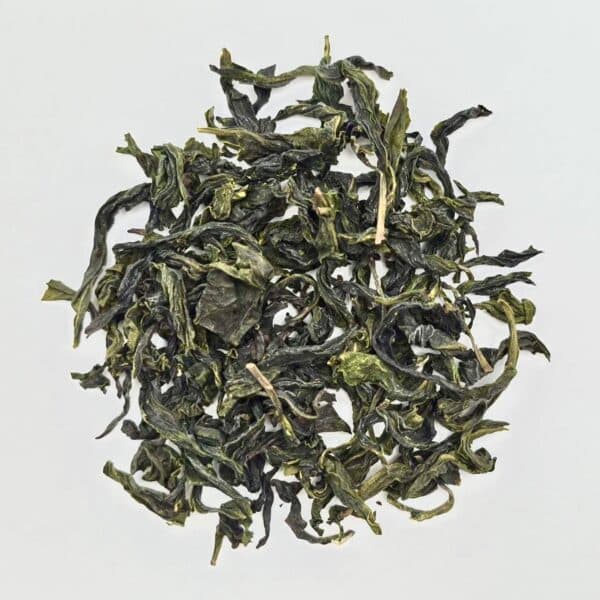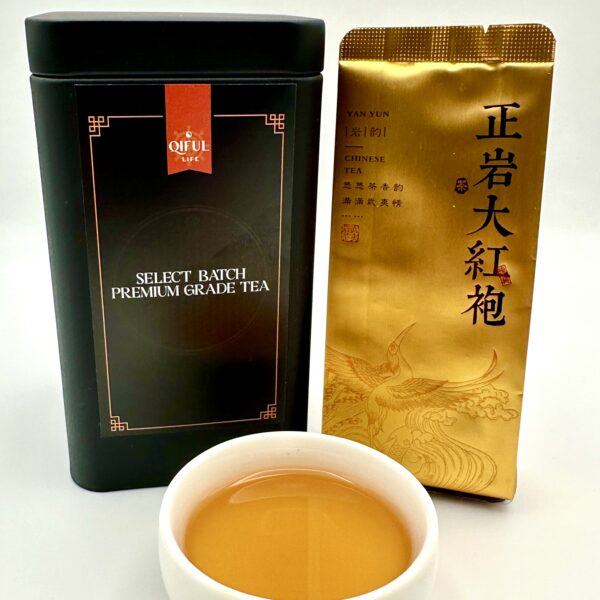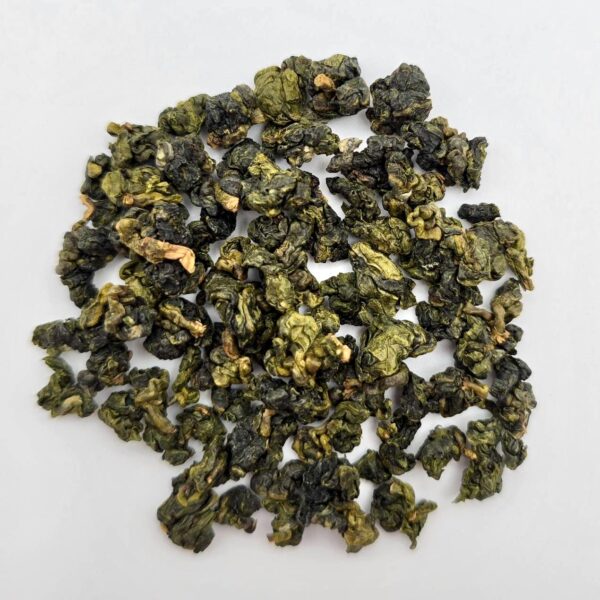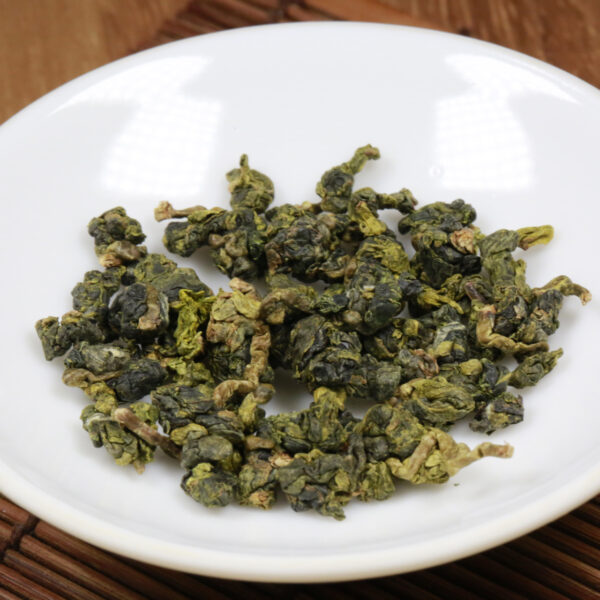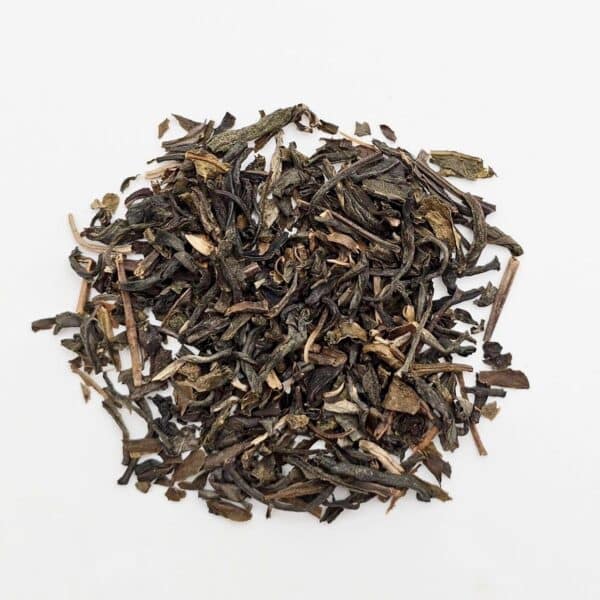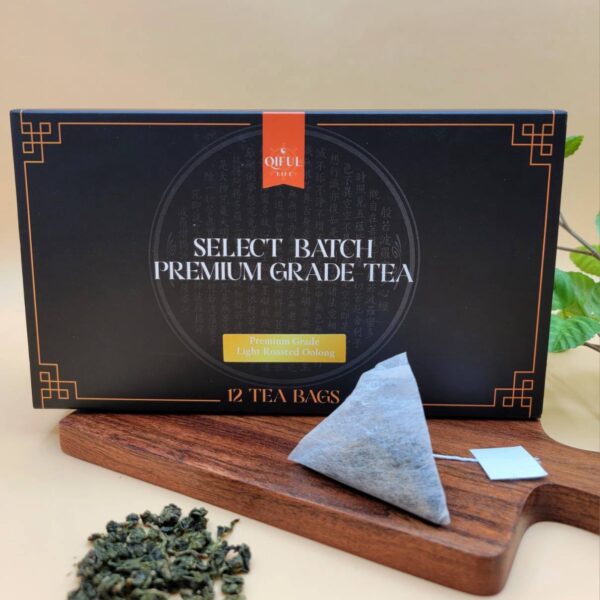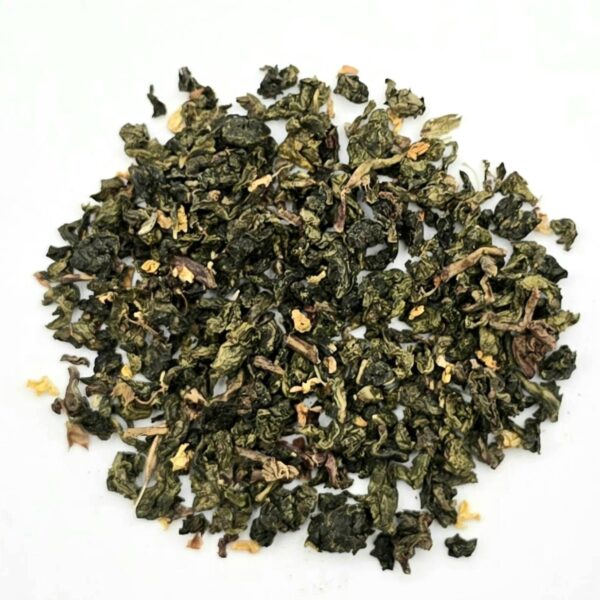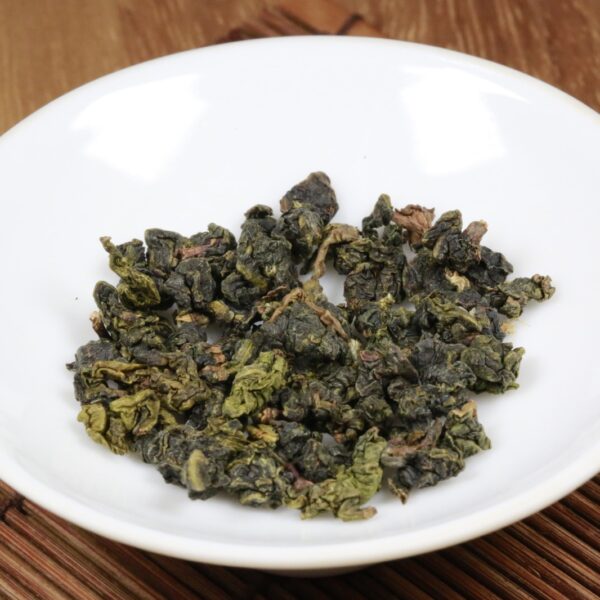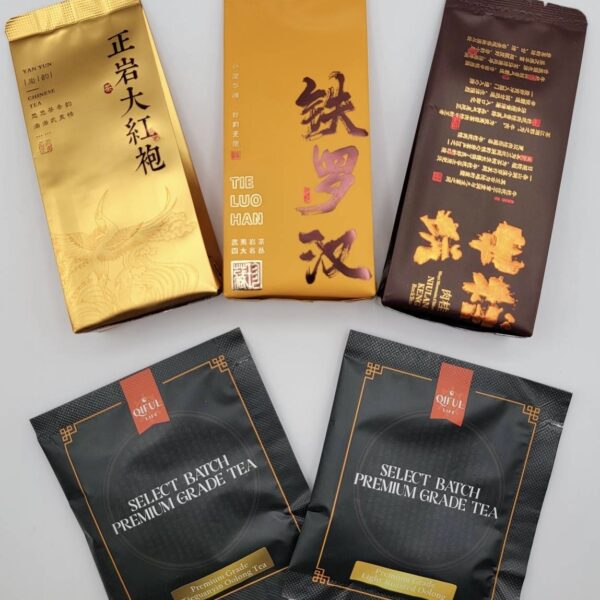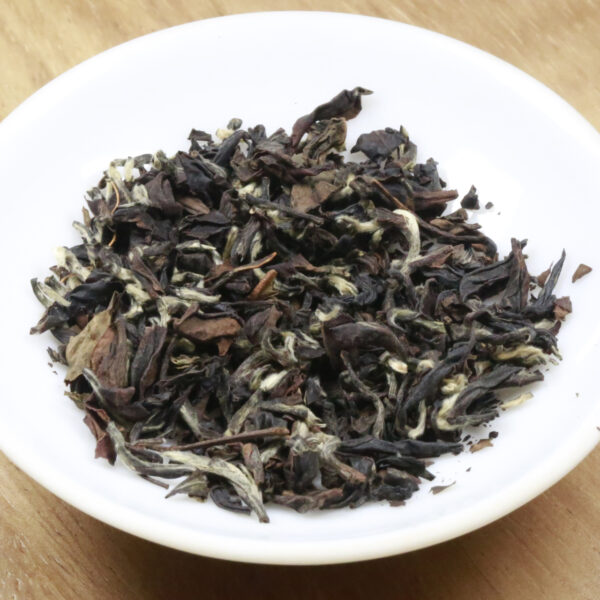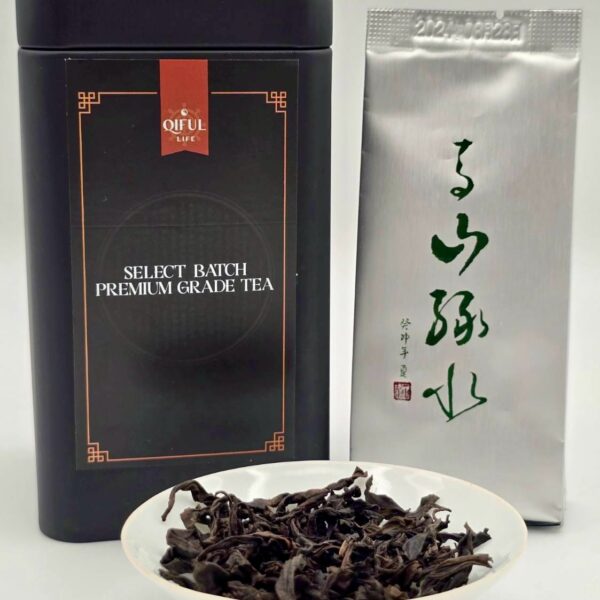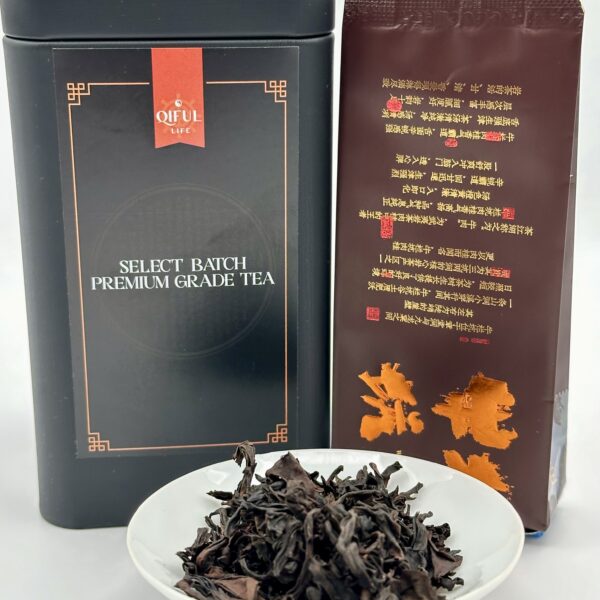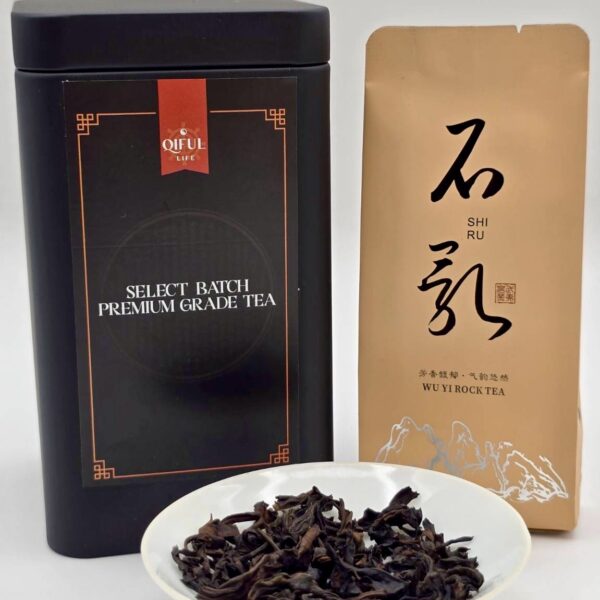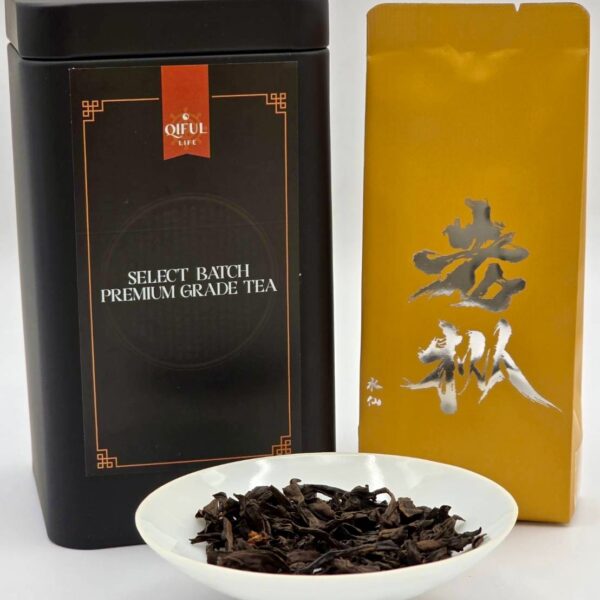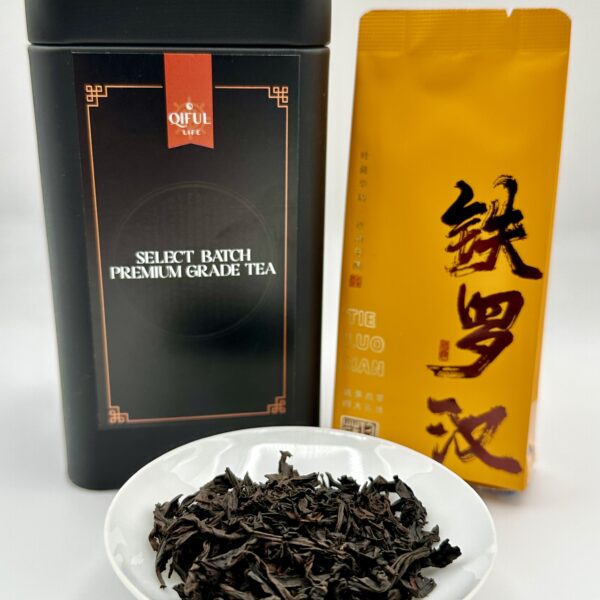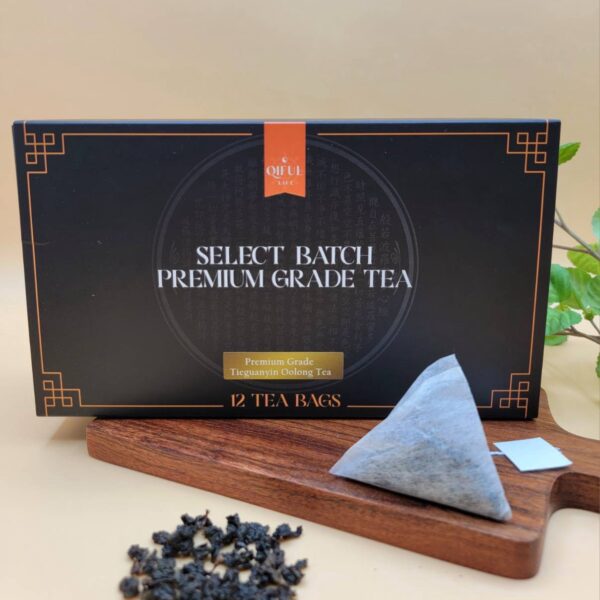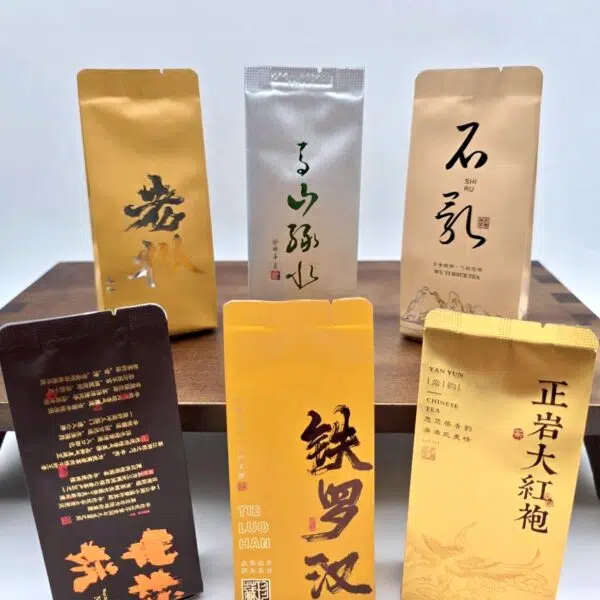Gourmet Tea » Collections » Oolong Tea
Oolong Tea
Oolong is a semi-oxidized tea, positioned between green tea, which is unoxidized, and black tea, which is fully oxidized. Oolong also varies by roasting level. Lightly roasted varieties offer sweeter, fruity notes, while mid to heavy roasted options have richer, more robust flavors. This diversity makes Oolong one of the most versatile tea categories.
Our most popular selections include high-mountain Oolongs from Taiwan and Wuyi Oolong Rock Tea from Fujian, China. All selections are gourmet quality, single origin, and organic.
-
Award Winning Gourmet Bao Zhong Tea
- $13.00 – $22.95
- This Bao Zhong Tea is a 2024 award winning selection from the Wenshan District in Taiwan. It has a crisp and floral flavor profile and is gourmet quality & hand plucked from resident tea masters. One of most popular teas at this site.
- Select options This product has multiple variants. The options may be chosen on the product page
-
Da Hong Pao Oolong Rock Tea from Wuyi Mountains
- $13.00 – $23.95
- Gourmet Da Hong Pao "Big Red Robe" Oolong Rock Tea from the Wuyi Mountains in Fujian, China. Premium, organic and low-acidic. Sourced from healthy old tea trees. Available in 10 gram (1 bag) or 20 gram amounts (2 bag) amounts.
- Select options This product has multiple variants. The options may be chosen on the product page
-
Gourmet Alishan Oolong Tea
- $23.95
- Alishan Oolong represents the pinnacle of Taiwan’s most renowned tea-producing region. This premium selection delivers a natural fragrance and inherent sweetness.
- Add to cart
-
Gourmet Da Yu Ling Oolong Tea
- $13.00 – $39.00
- Gourmet Da Yu Ling Oolong Tea from Taiwan. 2025 Spring Harvest Selection.
- Select options This product has multiple variants. The options may be chosen on the product page
-
Gourmet Jasmine Oolong Tea
- $13.00 – $23.95
- This Jasmine Oolong Tea is a Gourmet Selection. 100% Organic with only Natural Jasmine Plants Used (no unnatural fragrances). Sourced from our Resident Tea Master at Single Origin Farms in Taiwan. A True Oolong Gem.
- Select options This product has multiple variants. The options may be chosen on the product page
-
Gourmet Light Roasted Oolong Tea
- $13.00 – $18.95
- Rated 5.00 out of 5
- Experience our signature Oolong Tea, an expression of a Taiwanese Tea Master's Premium Grade High Mountain Oolong. This tea embodies a familiar Oolong taste while delivering refreshing floral notes and a satisfying light roasted and crisp undertone. Sourced from single origin growing environments and meticulously hand-picked, this Oolong is perfect for tea enthusiasts of all kinds. Indulge in Qiful Life's…
- Select options This product has multiple variants. The options may be chosen on the product page
-
Gourmet Osmanthus Oolong from Taiwan
- $23.95
- Experience premium loose leaf Osmanthus Oolong from Taiwan. Each 1-ounce package features organic, high mountain Oolong expertly blended with organic osmanthus for a smooth, balanced finish.
- Add to cart
-
- Out of Stock
Gourmet Snow Covered Oolong
- $13.00 – $49.00
- Snow Covered Oolong. Rare Oolong with Utmost Fragrance.
- Select options This product has multiple variants. The options may be chosen on the product page
-
-
- Out of Stock
Premium Oolong Tea Sampler
- $27.95
- Explore 5 Different Oolong Types from Taiwan and China with this Gourmet Oolong Tea Sampler Pack. Loose Leaf Tea & Tea Bags Both Included. 36 Grams in Total.
- Read more
-
-
Premium Oriental Beauty Tea
- $13.00 – $37.00
- Gourmet Oriental Beauty Tea from Taiwan. Also known as white tip Oolong tea, this premium selection is organic and single origin. Hand plucked and supervised from our resident tea master.
- Select options This product has multiple variants. The options may be chosen on the product page
-
Qi Lan Oolong Rock Tea from the Wuyi Mountains
- $13.00 – $23.95
- Select options This product has multiple variants. The options may be chosen on the product page
-
Rou Gui Oolong Rock Tea from Wuyi Mountains
- $13.95 – $24.95
- Rou Gui is a premium Oolong Rock Tea from China's Wuyi Mountains. Grown in mineral-rich red clay and nourished by fresh mountain streams. This selection is a hand plucked gourmet selection from award winning local farmers.
- Select options This product has multiple variants. The options may be chosen on the product page
-
Shi Ru ‘Stone Milk’ Creamy Rock Tea from the Wuyi Mountains
- $23.95
- Shi Ru Rock Tea from the Wuyi Mountains delivers a premium Oolong experience with creamy flavor, low acidity, a medium roast profile, and a clean finish.
- Add to cart
-
Shui Xian Oolong Tea from Wuyi Mountains
- $23.95
- Shui Xian Oolong Tea is a Heavy Roast & Robust Oolong Rock Tea from the Wuyi Mountains in Fujian, China. Gourmet & Organic Selection.
- Add to cart
-
Tie Luo Han Heavy Roast Oolong Rock Tea from Wuyi Mountains
- $13.00 – $23.95
- Tie Luo Han is a heavy dark roasted Oolong tea stemming from Wuyi Mountain in China's southeastern Fujian Province. Choose between 5 gram samples or 2 bags equivalent of 20 grams.
- Select options This product has multiple variants. The options may be chosen on the product page
-
- Out of Stock
Tieguanyin Roasted Oolong Tea from Taiwan
- $13.00 – $18.95
- Qiful Life's signature medium roast Oolong tea, an award-winning Muzha Tieguanyin cultivar from Taiwan, featured in our Tea Variety Pack. Wood-Roasted and Sun-Dried, offering a Rich, Wood-fired flavor complemented by notes of Taiwanese Gourmet Oolong. A great returning sweet selection and a wonderful coffee alternative.
- Select options This product has multiple variants. The options may be chosen on the product page
-
-
Wuyi Rock Tea Sampler
- $68.95
- This Wuyi Rock Tea Sampler Pack showcases six renowned varieties from the region, including Da Hong Pao, Rou Gui, Shi Ru, Qi Lan, and more. Organic and Premium Hand Plucked selections.
- Add to cart

